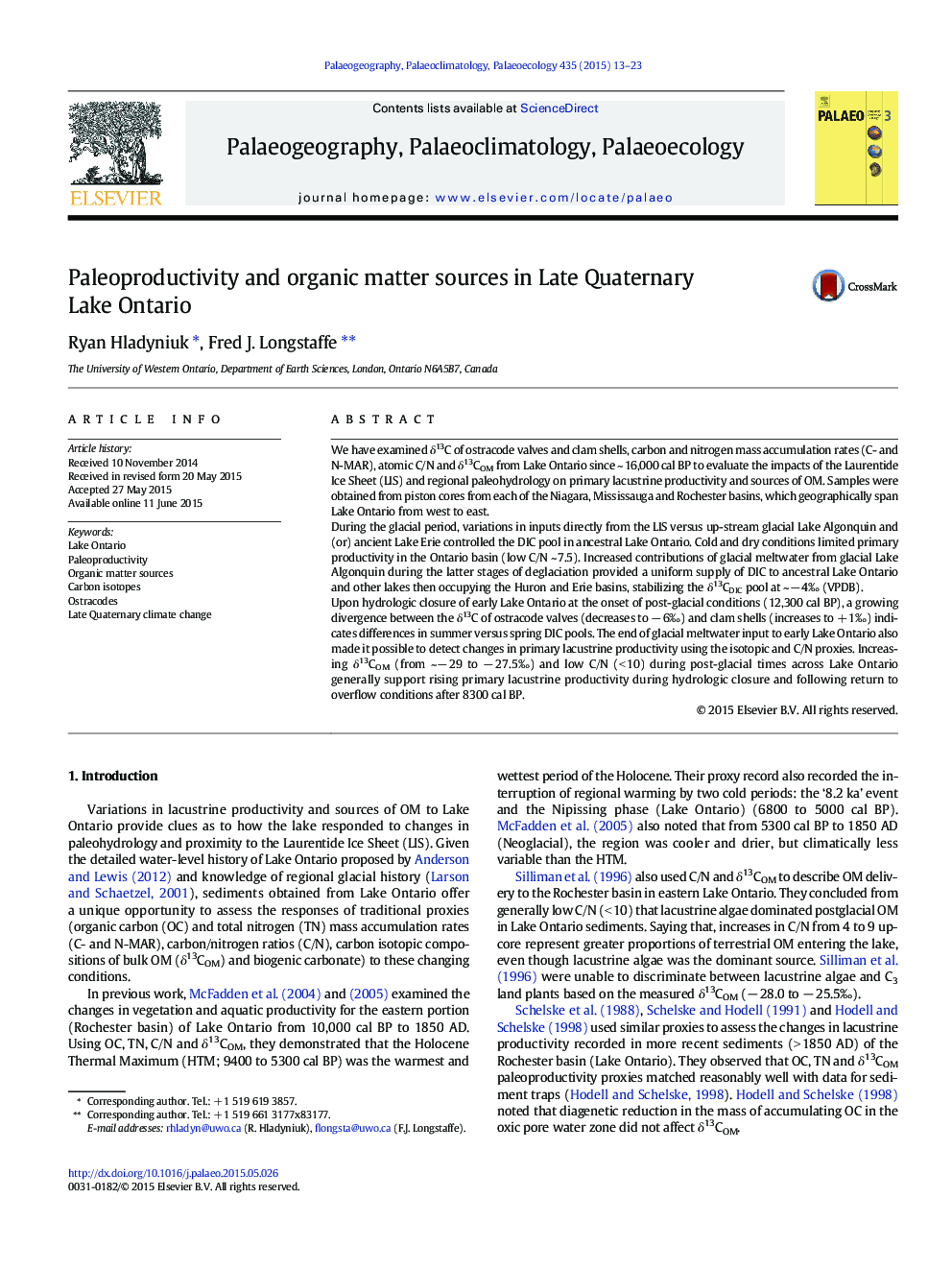| Article ID | Journal | Published Year | Pages | File Type |
|---|---|---|---|---|
| 6349692 | Palaeogeography, Palaeoclimatology, Palaeoecology | 2015 | 11 Pages |
Abstract
Upon hydrologic closure of early Lake Ontario at the onset of post-glacial conditions (12,300 cal BP), a growing divergence between the δ13C of ostracode valves (decreases to â 6â°) and clam shells (increases to + 1â°) indicates differences in summer versus spring DIC pools. The end of glacial meltwater input to early Lake Ontario also made it possible to detect changes in primary lacustrine productivity using the isotopic and C/N proxies. Increasing δ13COM (from ~â 29 to â 27.5â°) and low C/N (< 10) during post-glacial times across Lake Ontario generally support rising primary lacustrine productivity during hydrologic closure and following return to overflow conditions after 8300 cal BP.
Related Topics
Physical Sciences and Engineering
Earth and Planetary Sciences
Earth-Surface Processes
Authors
Ryan Hladyniuk, Fred J. Longstaffe,
